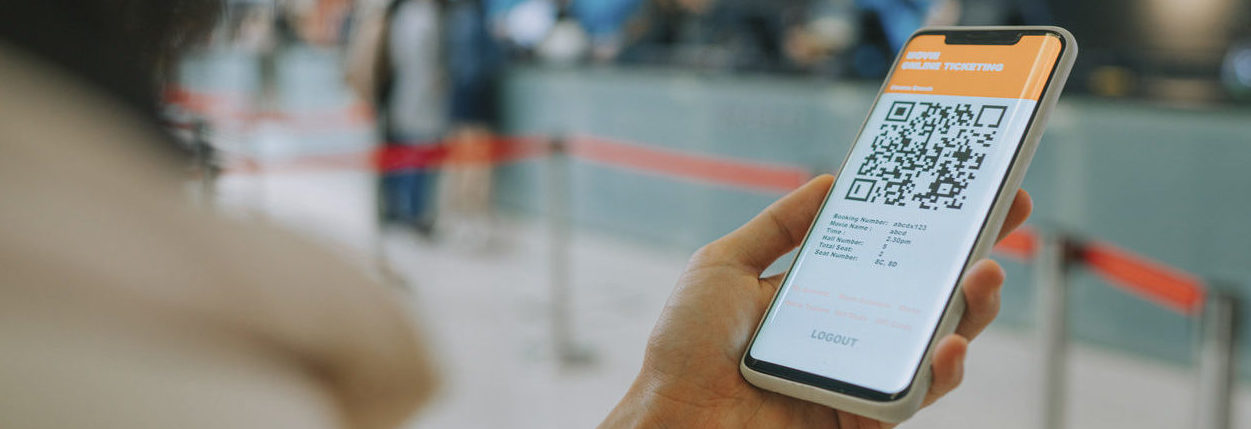Around the country, events are ramping up again. Guest experience leaders and event organizers are looking to reimagine the fan experience and create new ways to attract visitors and fans.
As any venue and events manager knows, a positive fan experience depends on much more than the headliner the fan has arrived to see. The greatness of the concert or quality of the sports team matters little if frustrations like parking, finding the right seats, or simply knowing where to find the bathrooms continue to sneak up.
A recent study by Deloitte confirms a simple truth: when it comes to stadium experience, you have to get the basics right. The study found that once a fan’s basic expectations were met—from a safe and comfortable stadium to basic wayfinding—fan loyalty increased consistently.
When events are unorganized, however, those frustrations begin to mount, leading to a negative guest experience. That negative experience, in turn, can begin to snowball. Over time, negative word of mouth will lead to lower attendance and revenue. The best on-field or on-stage experience gets derailed by a subpar experience.
Fortunately, many of these frustrations are relatively simple to solve. This guide covers five best practices that any major event or venue organizer can use to increase the quality of their guest and fan experience.
1. Improve the fan experience of purchasing a parking pass
Parking is among the biggest fan frustrations during a typical event. In a Temkin Group study only 60% of sporting events attendees reported parking as satisfactory. That’s lower than other potential sticking points like buying tickets or using the restroom.
That, in turn, makes taking care of parking as early as possible in the experience absolutely vital to the fan experience. Ideally, venues should begin communicating about parking as soon as guests and fans buy their tickets. Simplify things by clarifying exactly what’s needed from the start.
One opportunity is to sell or provide parking passes along with the tickets. Guests may also have the ability to reserve a parking spot as they choose their seats, further simplifying the process.
But it doesn’t end there. If public parking is available, communicate it. Showing your guests all the options, including their distance from the venue, may help them choose yours. At the very least, it ensures that they’re clear about what to choose, avoiding potential frustrations later in the process.
2. Provide resources to guests before they arrive
Parking, of course, is just one of the potential pain points your guests may face before the date and time of the event. Early communication with helpful resources can play a crucial role in ensuring they have everything they need to plan their trip and minimize frustrations. Potential resources to provide your guests include:
- Maps and wayfinding options to their preferred parking location
- Maps and wayfinding options from their preferred parking location to the venue
- Information about available and popular tailgate locations
- Information about available restrooms, including family, handicapped, and all-gender restrooms
- Locations for merch and different kinds of food and drinks, both in and around the venue
Generally speaking, providing information about any type of amenity your guests may be interested in will be helpful. They will choose those most relevant to them, helping them make a more specific plan ahead of their visit. Providing these resources before the date of the event allows them to be more organized.
Are interactive maps for a sporting event a novel idea? Not exactly. Check out our blog ‘The Growing Role of Interactive Maps for Sporting Events‘ to see what teams are already using interactive maps and how they’re using it!
Taking this step also comes with a secondary benefit for your venue. You will need fewer hand-outs and fliers with maps because guests can already use them ahead of time. Meanwhile, you’ll be able to keep guest pile-ups and confusion to a minimum, streamlining fan traffic before and after the event or game.
3. Incentivize fans to arrive at the venue early

Even the best pre-event organization doesn’t alleviate all confusion or complications on the big day. That’s why event managers and promoters who can successfully incentivize fans to arrive at the venue early can gain a major advantage in building fan satisfaction and loyalty.
The following fan experience strategies can help build that incentive for your audience:
- Signing activities or making the stars they’ve come to see available in some other pre-event fashion
- Tours of the venue and diving into the history behind it
- Photo opportunities, both of the teams and the venue itself
- Lower pre-event prices for merch or food, incentivizing cost-saving audiences to spend a bit more time at the venue
Building this early connection with fans has a few distinct advantages. First, it creates a stronger connection with your fans; they now associate their tickets with your venue, not just the event. It also allows them to get acquainted with your space, feeling more comfortable in the process.
Finally, incentivizing fans to arrive early can help ensure the traffic flows more smoothly. You’ll alleviate frustrations among thousands of guests all waiting in the same line simultaneously.
4. Provide easy wayfinding abilities once guests arrive
The first three steps are largely connected to activities that take place before the first guest steps foot into the venue. Of course, that’s just the beginning. Guests will also need guidance for a positive venue experience once they arrive.
Check out the growing role of interactive maps for sporting events.
At this point in the event journey, effective wayfinding is crucial. Any minute lost could become another frustration. The above-mentioned Temkin Group study found the following key pain points related to wayfinding that guests will experience in real time during large events:
- Easily finding their seats and seat sections
- Finding food and drink opportunities that match their preferences
- Finding bathrooms that are not overcrowded or dirty
Guests will need help to easily get from point A to point B and so on. Just as importantly, they’ll need those navigational instructions in the midst of a large crowd and with limited time to spare.
Traditionally, this has meant sufficient signage and event maps, along with plenty of ushers and other personnel to direct guests into the right places. Modern wayfinding technology, like interactive venue maps, has simplified the process. These tools provide real-time walking information in categories ranging from food and beverage to restrooms and beyond.
5. Immerse fans in the venue through QR codes
Beyond modern wayfinding technology, event managers and promoters have increasingly found new ways to immerse their audience into the event far beyond the game or show itself. The renaissance of QR codes has played a major role in connecting the physical and virtual experience. You can create opportunities that would have been impossible just a few years ago.
QR codes, for instance, can link audiences to the event or team website for more information about the event or its broader context. When placed close to merchandise stores and food booths, they can promote discounts or deals. Additionally, you can strategically place QR codes at junctions where audiences tend to get confused. Those codes can link to your interactive map for easy wayfinding options.
QR codes can also replace payment mechanisms while at the venue, as evidenced by examples like SoFi Stadium. This wallet app allows fans to pay for food, drinks, and merchandise easily. The stadium even promotes an experience where fans need neither cash nor any of their debit or credit cards to have an unforgettable day.
The traceability of QR codes can play a vital role in improving the guest experience. Managers can see which codes get scanned most frequently, uncovering both successful messaging and opportunities for improvement. Over time, these insights can lead to decision-making that further eliminates pain points. Ultimately, you can elevate both the digital and physical components of the event.
Leveraging virtual tools for a better, more positive fan experience
It’s the little things that count. Positive and memorable guest experiences rely on the entire process of an event. But seemingly routine tasks like finding parking, knowing where the amenities are, and getting small discounts on merchandise can play a major role in avoiding frustrations that ultimately reflect badly on your venue and brand. Effective wayfinding can play a significant role in reducing these frustrations, creating a more positive fan experience in the process.
Here’s the good news. Recent years have seen drastic technology improvements that allow you to address these exact concerns using modern tools. Interactive maps and other virtual experience components have become especially relevant for venues looking to optimize their guests’ event experiences in every way.
That’s where Concept3D comes in. Venues and destinations across industries trust us to level up their digital guest experience with tools like our Interactive Maps. Learn more about our services — and how we can help you succeed — by contacting us today.

